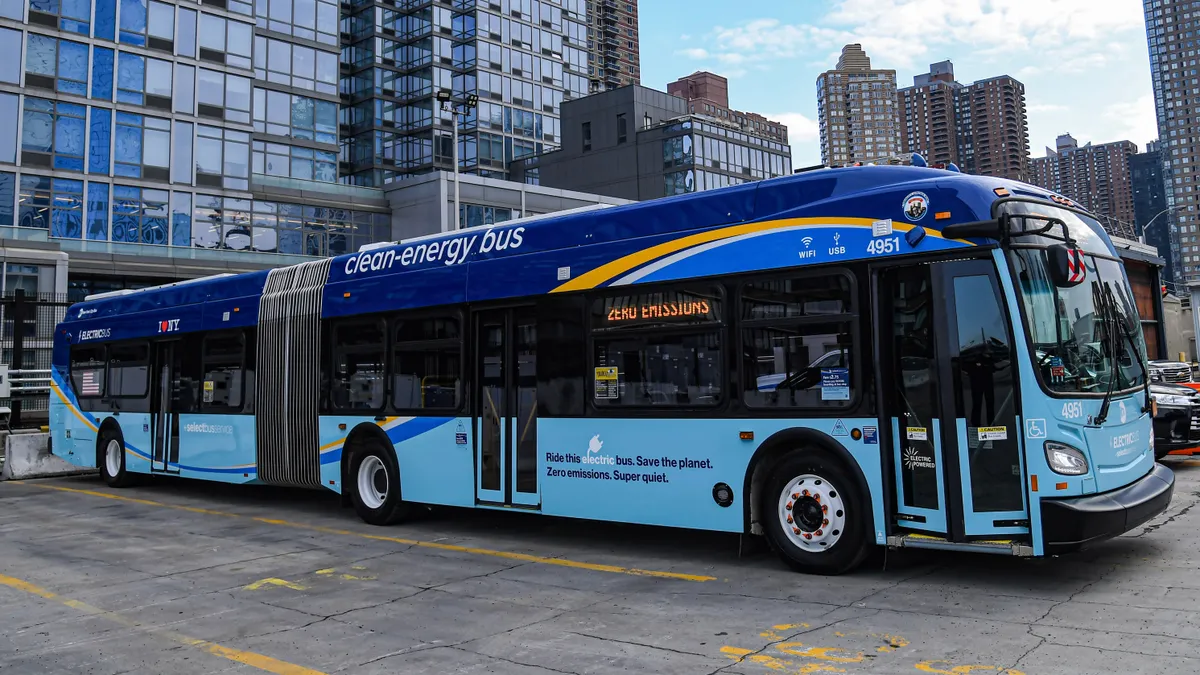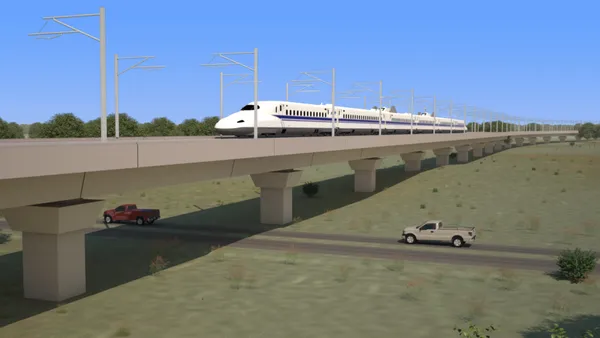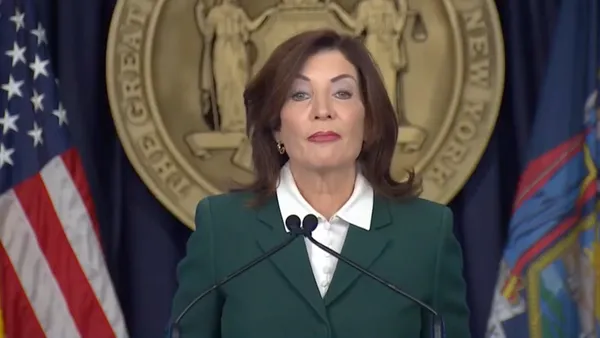Dive Brief:
- With transportation as the largest source of greenhouse gas emissions in the U.S., a new report from Environment America Research & Policy Center and the Frontier Group outlines "achievable" strategies to clean up the sector.
- The "Destination: Zero Carbon" report calls transportation "climate enemy #1" due to oversized vehicles, subsidized driving, inadequate transit, poor pedestrian infrastructure and car-dependent land use.
- It highlights three main targets to reach zero-carbon transportation: all new light-duty vehicles sold after 2035 are electric vehicles (EVs); all transit and school bus fleets are electrified by 2030; and the number of people who travel by walking, biking or taking transit is doubled by 2030.
Dive Insight:
The report notes that many communities are "physically laid out in ways that require car trips for basic, everyday travel," with low-density and sprawling infrastructure essentially laying the groundwork for the emissions-heavy transportation network. Reversing that will require significant investment, said report author Morgan Folger, including policy changes.
"A lot of our system has been set up to prioritize driving, with subsidies like tax incentives to parking to insufficient taxes on gasoline. These add up to make the cost of driving pretty cheap, without looking at the actual impacts," Folger, director of Environment America's Clean Car Communities program, told Smart Cities Dive. "One of the ways we can change this is to subsidize sources that are better for the climate and to stop funding roads and highways that we don’t need."
For example, the report says that doubling travel by walking, biking or transit — an additional 100 billion miles — could mean complete streets efforts that build out sidewalks and bike lanes, and transit-oriented development that makes it easier to live and work near transit stops. But it would also mean changes to taxes, including congestion pricing, that make driving more expensive.
Likewise, electrifying passenger vehicles would require expanded subsidies for EVs and an expansion in charging infrastructure. Governments may have more direct control over the goal of electrifying bus fleets, since they have purchasing power.
There have been hurdles to deploying electric buses, like their high up-front costs and operational uncertainties, but cities have increasingly started turning over their fleets. The cities with the three largest bus systems — New York City, Los Angeles and Chicago — all have announced plans to go all-electric.
While the federal government is not taking much action to clean up transportation, notably by rolling back federal tailpipe emissions standards, cities and states have made low-carbon transportation a priority.
One of the biggest efforts is set to come from the 11 Northeastern and Mid-Atlantic states and the District of Columbia in the Transportation and Climate Initiative, which has released a draft memorandum of understanding for a cap-and-invest program to target transportation emissions. That plan, which would invest in transit and electric infrastructure, seeks to cut the region’s emissions by up to 25%.










